Canadian celebrity chef and internet star Matty Matheson teamed up with architect Omar Gandhi to create a restaurant landscape consisting entirely of wood, from top to bottom. There is little sign of rustic, folkloristic romance here, though.
He is probably the most unusual celebrity chef you will ever come across. Covered in tattoos, wearing a baseball hat or bucket hat, Matty Matheson presents classic dishes from an augmented range of North American fast and slow food – with a splash of shopping channel and reality TV. Whether BLT sandwich (bacon/lettuce/tomato) or beef as a Sunday roast, larger-than-life restaurant chef Matheson conjures up simple recipes. But instead of turning them into haute cuisine, he keeps both feet firmly on the ground and serves up his food in the spirit of everyday meals. It is a discipline that allows him to explore his creativity and desire for perfection. And his Toronto restaurant, Prime Seafood Palace, shows that Matheson is an entertainment chef who should never be underestimated. Canadian star architect Omar Gandhi was responsible for the design.
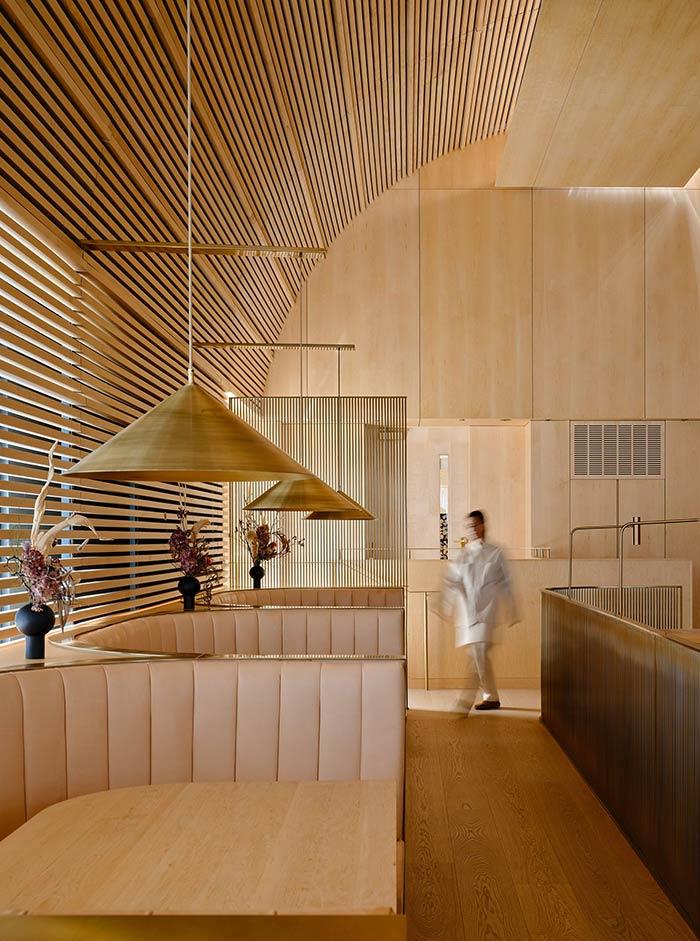
“The biggest thing that I thought about when I wanted to design this restaurant was I didn’t want somebody who designs restaurants,” Matheson explains on a brief tour of the location with “AD” magazine. He says that “very quickly, restaurants start looking similar” – something he wanted to avoid at all costs.
The biggest thing that I thought about when I wanted to design this restaurant was I didn’t want somebody who designs restaurants.
Matty Matheson, star chef and internet celebrity
He was aiming for a venue with a fresh look and new ideas. “I wanted to work with somebody who didn’t know exactly where the booths go or how service stations work.” In short: The client wanted somebody who thinks outside the box.
A surprising inner space
Following five years of planning and construction, the result of this collaboration between chef and architect has become one of Toronto’s most prestigious locations in the district of Queen West. From the outside, it is a rather unassuming building with white brick walls and black windowframes. The surprise comes once you are inside. The description by Omar Gandhi Architects says it all: “PSP was imagined as a light-filled wood cathedral, lining an otherwise inconspicuous existing brick-clad building that blends into the city’s urban fabric.”
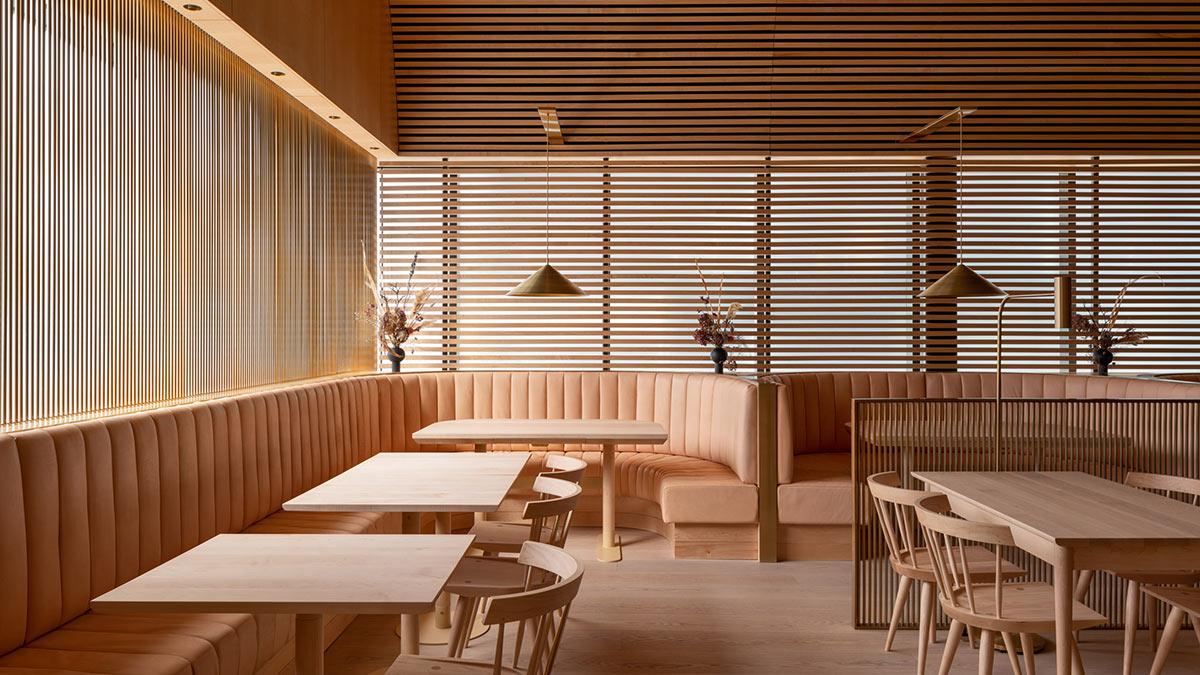
Similar to their residential projects, the architects have designed a homogeneous interior that consists entirely of wood as a natural building material, from floor to ceiling. And they confirm that “designing with wood and light was the starting point for the design”. That said, architect Omar Gandhi then outlines their main focus: “I would say that maybe the most important material in this space is light, natural light, and artificial light.”
Maybe the most important material in this space is light, natural light, and artificial light.
Omar Gandhi, architect
In this harmonious scene, neither the beige leather upholstery on the seats nor the brass lampshades stand out. The only points of contrast are the restaurant guests and the food on their plates. Meals include grilled Humboldt squid and pork chops, served just as they are – without side dishes or any adornment.
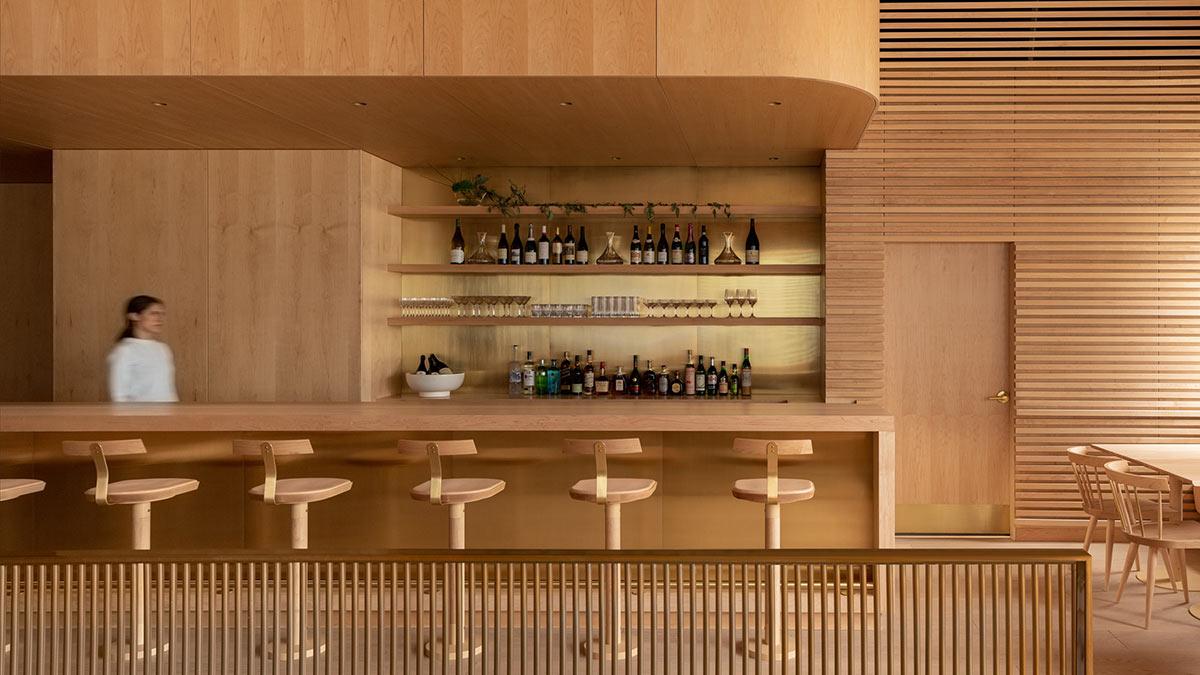
Wood filters daylight
The barrel-vaulted space created above the tables envelops the scene like a kind of brace. Across the windows, the panelling of wooden slats creates privacy from the outside world and also acts as a soft filter for the daylight. The entire interior furnishings were tailor-made by a young wooden furniture producer: Coolican & Company in Toronto.
The unadorned elegance of the furniture conceals a few surprising features. Mattheson pulls out a shallow drawer from beneath a dining table. “Under here, you have a kind of sliding cutlery drawer for steak knives.” This interrupts the rigid landscape and injects a sense of ease around the table, which is entirely what Matheson intended.
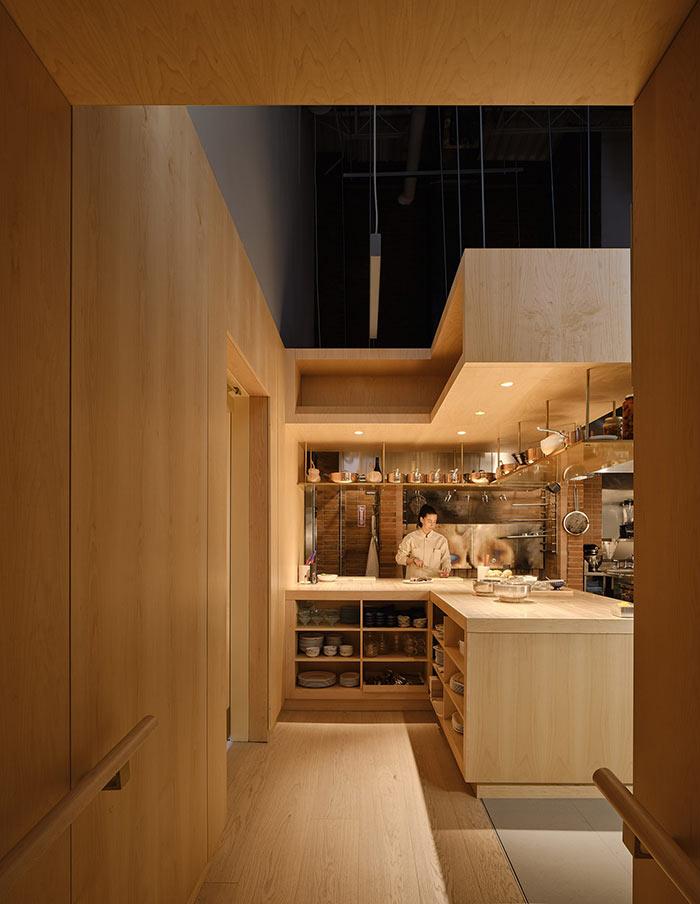
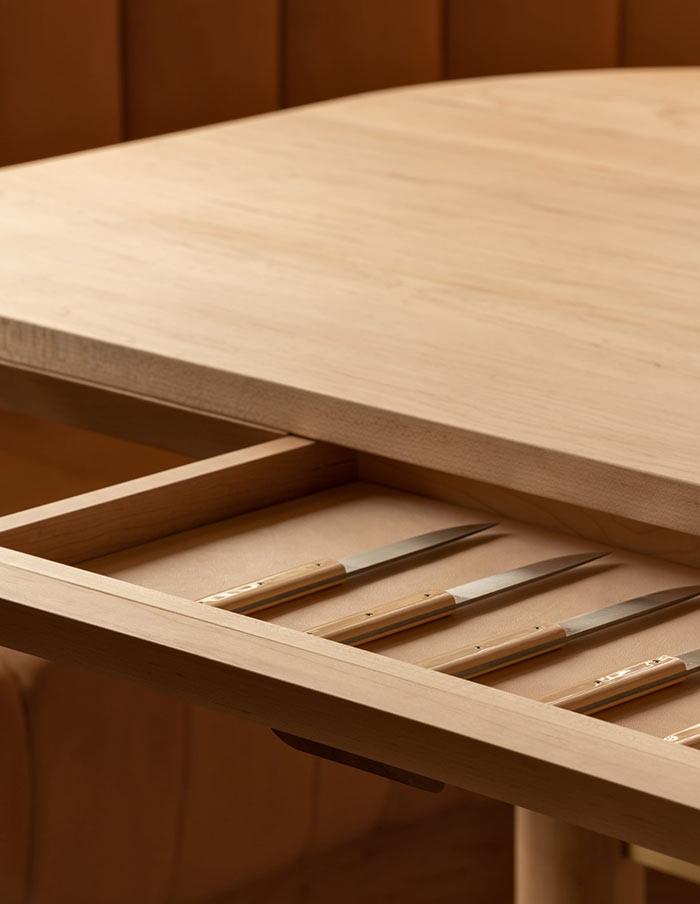
A timeless interior concept
A brass rail discretely divides up the space in the large dining space, leading into an open concept kitchen. “There’s something really traditional and classic about all of the brass and leather and wood. We especially loved the idea that each of these materials would develop a beautiful patina over it. So, this isn’t something that just looks beautiful now. I think it’s just the starting point. As those scratches take place and the leather starts to darken, and the brass starts to have little markings on it,” enthuses Omar Gandhi, describing the timeless character of the interior concept.
We especially loved the idea that each of these materials would develop a beautiful patina over it.
Omar Gandhi, architect
Towards the rear of the building, there is another dining room. Unlike the front area, the feeling is more countryfied here, although in the sense of Scandinavian hygge. With a Jøtul wood-burning stove, sheepskins on the seats and the cabin-like timber ceiling, the room is reminiscent of Ontario cottage country, say the architects. Gandhi defines the style of the restaurant more precisely: “There was sort of an intersection between Scandinavian and Japanese and maritime architecture.”
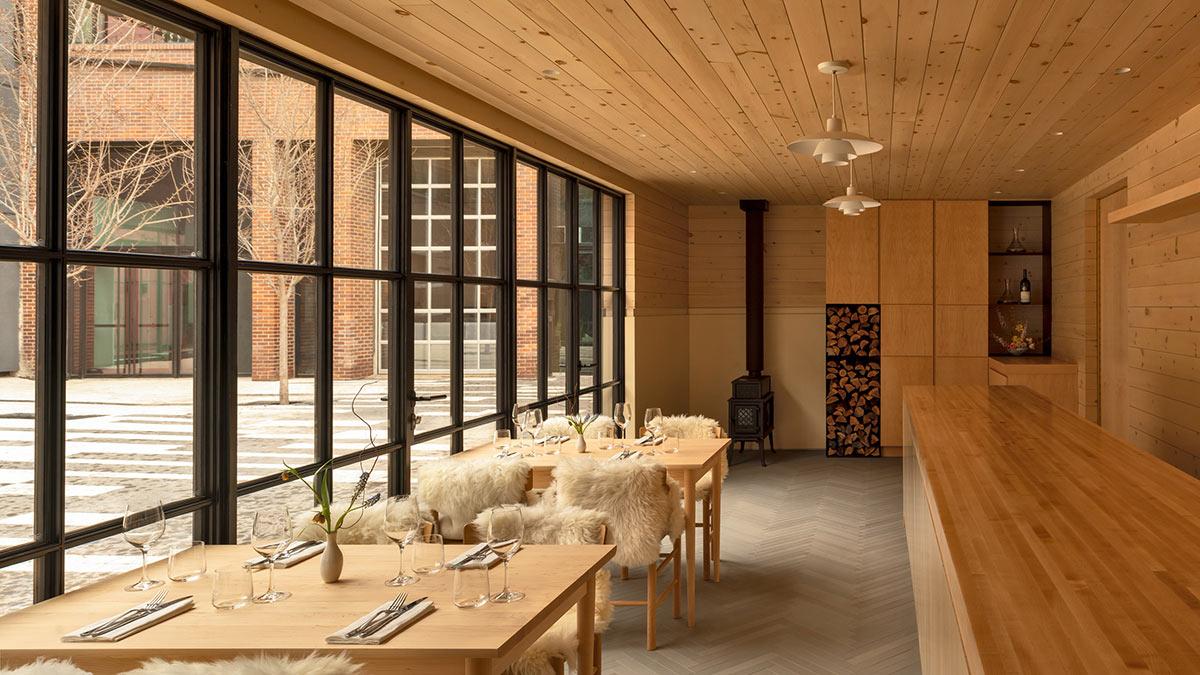
Personal and familiar
On the menu and also throughout the rooms, you find a number of references to The Blue Goose, the restaurant run by Matheson’s grandfather on Prince Edward Island. It is a place that had a great influence on him, he says. And so Prime Seafood Palace is a very personal place, the celebrity chef reveals: “This restaurant is a perfect example of my life through a culinary lens.”
Omar Gandhi goes a step further, observing: “This restaurant is like the ground floor of a house.” There’s the kitchen, there’s the big dining area. The room at the back almost feels like the family room.”
Text: Gertraud Gerst
Translation: Rosemary Bridger-Lippe
Photos: Adrian Ozimek, Doublespace

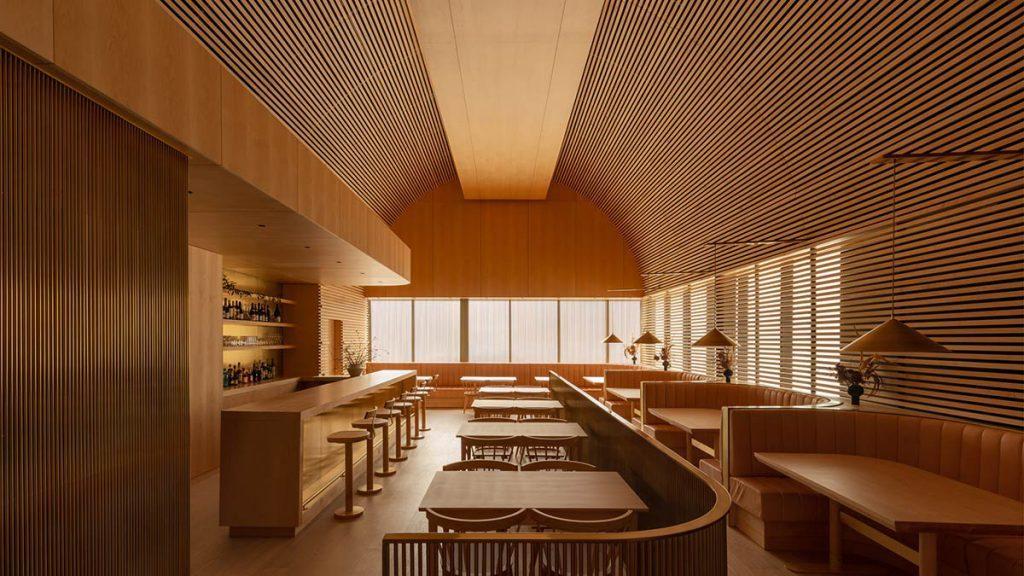
iThere are no comments
Add yours